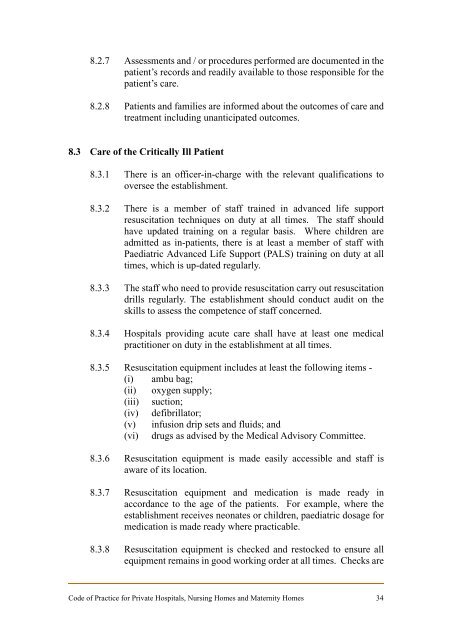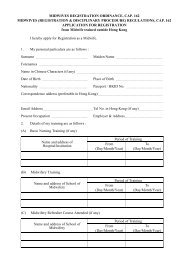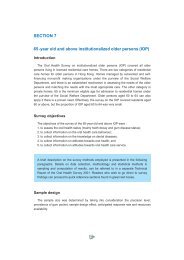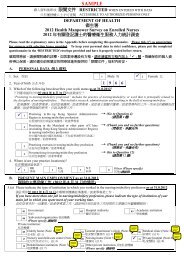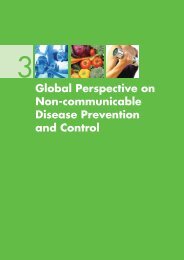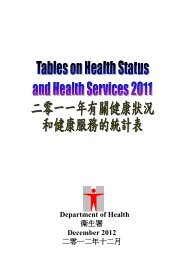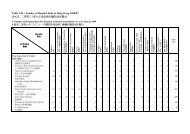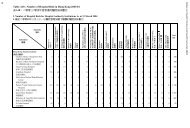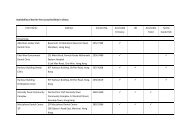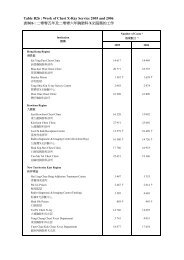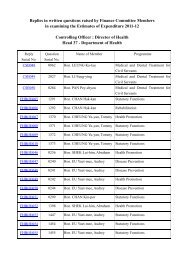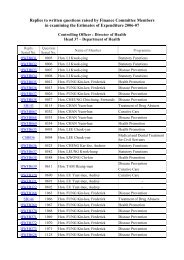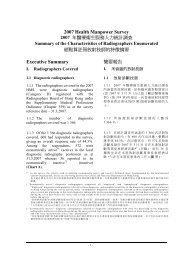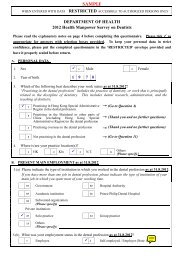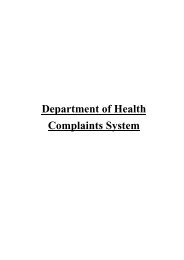Code of Practice for Private Hospitals, Nursing Homes and Maternity ...
Code of Practice for Private Hospitals, Nursing Homes and Maternity ...
Code of Practice for Private Hospitals, Nursing Homes and Maternity ...
Create successful ePaper yourself
Turn your PDF publications into a flip-book with our unique Google optimized e-Paper software.
8.2.7 Assessments <strong>and</strong> / or procedures per<strong>for</strong>med are documented in the<br />
patient’s records <strong>and</strong> readily available to those responsible <strong>for</strong> the<br />
patient’s care.<br />
8.2.8 Patients <strong>and</strong> families are in<strong>for</strong>med about the outcomes <strong>of</strong> care <strong>and</strong><br />
treatment including unanticipated outcomes.<br />
8.3 Care <strong>of</strong> the Critically Ill Patient<br />
8.3.1 There is an <strong>of</strong>ficer-in-charge with the relevant qualifications to<br />
oversee the establishment.<br />
8.3.2 There is a member <strong>of</strong> staff trained in advanced life support<br />
resuscitation techniques on duty at all times. The staff should<br />
have updated training on a regular basis. Where children are<br />
admitted as in-patients, there is at least a member <strong>of</strong> staff with<br />
Paediatric Advanced Life Support (PALS) training on duty at all<br />
times, which is up-dated regularly.<br />
8.3.3 The staff who need to provide resuscitation carry out resuscitation<br />
drills regularly. The establishment should conduct audit on the<br />
skills to assess the competence <strong>of</strong> staff concerned.<br />
8.3.4 <strong>Hospitals</strong> providing acute care shall have at least one medical<br />
practitioner on duty in the establishment at all times.<br />
8.3.5 Resuscitation equipment includes at least the following items -<br />
(i) ambu bag;<br />
(ii) oxygen supply;<br />
(iii) suction;<br />
(iv) defibrillator;<br />
(v) infusion drip sets <strong>and</strong> fluids; <strong>and</strong><br />
(vi) drugs as advised by the Medical Advisory Committee.<br />
8.3.6 Resuscitation equipment is made easily accessible <strong>and</strong> staff is<br />
aware <strong>of</strong> its location.<br />
8.3.7 Resuscitation equipment <strong>and</strong> medication is made ready in<br />
accordance to the age <strong>of</strong> the patients. For example, where the<br />
establishment receives neonates or children, paediatric dosage <strong>for</strong><br />
medication is made ready where practicable.<br />
8.3.8 Resuscitation equipment is checked <strong>and</strong> restocked to ensure all<br />
equipment remains in good working order at all times. Checks are<br />
<strong>Code</strong> <strong>of</strong> <strong>Practice</strong> <strong>for</strong> <strong>Private</strong> <strong>Hospitals</strong>, <strong>Nursing</strong> <strong>Homes</strong> <strong>and</strong> <strong>Maternity</strong> <strong>Homes</strong> 34


